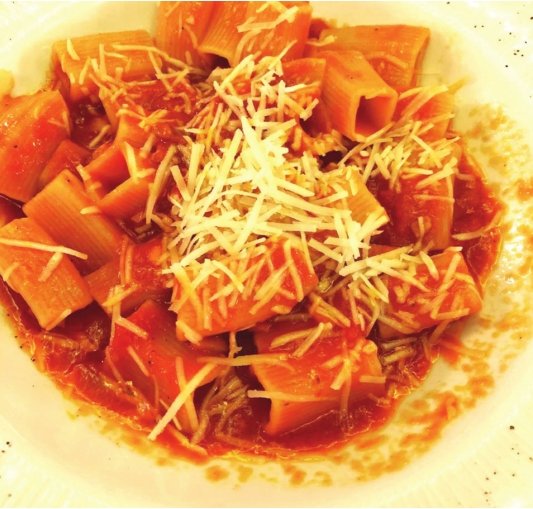

There are few wrong answers to enjoying wine, so long as those that imbibe are not driving or operating heavy machinery — and a few other things.
Further, food and wine pairing often come across a touch overwrought at best and, at worst, can be an exercise in self-congratulatory behavior. If you want to drink moscato with your strip steak, you do you.
But periodically, one may stumble into a dinner pairing that makes both the food and wine truly sing to the soul. Note: the fact that wine is an intoxicant oft drunk during romantic pursuits may also have something to do with it.
It’s not a coincidence that so many wines seem to pair well with dishes from their respective regions. There is a common expression used by wine lovers and chefs: “What grows together, goes together.”
Sometimes this may be used more tongue-in-cheek, i.e. the “garbage plates” of Rochester, New York, alongside the local Genesee Ale, but often there is real harmony in drinking something that grew a mile away from the foodstuffs that share the dinner table.
However, Rome, Italy, is a consumer culture. Sure there are nearby vineyards, but their immediate wines don’t dominate menus in the city. And many of the common dishes are fulfilling in their simplicity.
Cacio e Pepe is just that. It simply means “cheese and pepper,” and uses longer pasta like spaghetti with Pecorino Romano cheese. Anthony Bourdain once said it “could be the greatest thing in the history of the world.”
This Roman pasta dish does scream for something at least semi-local. About ten miles southeast of Rome rests a hilltop village named Frascati, where Romans flock during summer weekends to escape the pounding heat.
The wineries of Frascati have had to do a little soul-searching, but one producer still stands as a key barometer of quality: Fontana Candida. Their 2017 Frascati is worth every penny at $12 retail. It is made in a dry style, with a crowd-pleasing Granny Smith apples and lemon tartness. It drinks really fresh.
Made of locally indigenous grapes (malvasia bianca di candia, malvasia del lazio and trebbiano toscana), this shows more fruit mid-palate than most pinot grigio I’ve had from Northern Italy at this price. Where Frascati may have suffered an image blemish in the last few decades, it certainly wasn’t at the hands of Fontana Candida.
Carbonara is another famous Roman dish that has safely landed with American appetites. And for good reason. The best carbonara could probably end longtime family disputes. You need guanciale, or pork cheek, eggs, black pepper, Pecorino Romano and Parmesan. There are many pastas used, but spaghetti is the most common.
Considering carbonara has a bit more thickness, along with fatty meat, the chosen wine will usually have to match these characteristics accordingly. There are a few wines a bit south in the region of Campania, home to Naples and the Amalfi Coast, that fit the bill. Feudi di San Gregorio’s 2016 fiano di avellino is one you can find locally for about $23. It wouldn’t be accurate to identify a direct comparison to, say, a local wine.
The aromatics show very expressive with both fresh and dried floral aromas like daisies or sunflowers. The palate shows a very generous style leaning into peaches and freshly picked apricot, with enough body to match the weight of carbonara. Now, if you’re the type of cook to go heavy on cream or pork, I’d suggest a full-bodied white like an oak-driven chardonnay.
Amatriciana is the only tomato sauce listed in this column, and it’s technically not Roman. It’s from the small village of Amatrice on the Lazio/Abruzzo border, which, unfortunately, was almost completely destroyed by an earthquake in 2016. But Amatriciana has popularity in Roman trattorias, partially due to the amount of service workers who moved from the area to Rome, but also due to the fact that it tastes like the best version of food heaven.
Guanciale is back in action here, with the tomato, pecorino and olive oil.


Montepulciano from Abruzzo is a dynamite foil for this savory sauce. If you can find Valentini or Cerulli Spinozzi, they are probably the best examples of this medium-tofull-bodied red, for about $25.
And there are many bad, lifeless examples of cheap ones. La Quercia is a good version at about $15. Their montepulciano carries similar savory, herbaceous traits that could double up as your everyday pizza and redsauce pasta wine.
The tannins don’t show nearly as much drying as sangiovese from Chianti Classico. Rather, the wine is supple, and those tomato and sage flavors will absolutely enchant the amatriciana sauce. And the easy price should make your recreation of a Roman holiday all that much more realistic.
Justin King is an Advanced Sommelier through the Court of Master Sommeliers, and owner of Bridge Street Social, a wine and cocktails-focused restaurant in DeWitt.
Support City Pulse - Donate Today!
Comments
No comments on this item Please log in to comment by clicking here